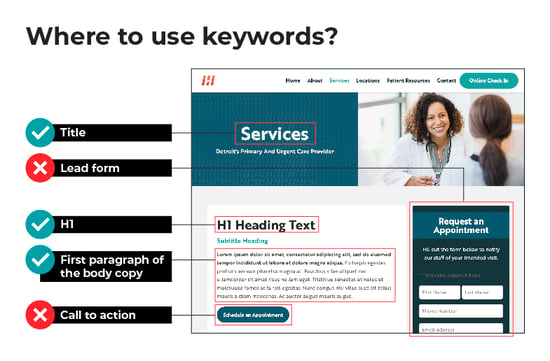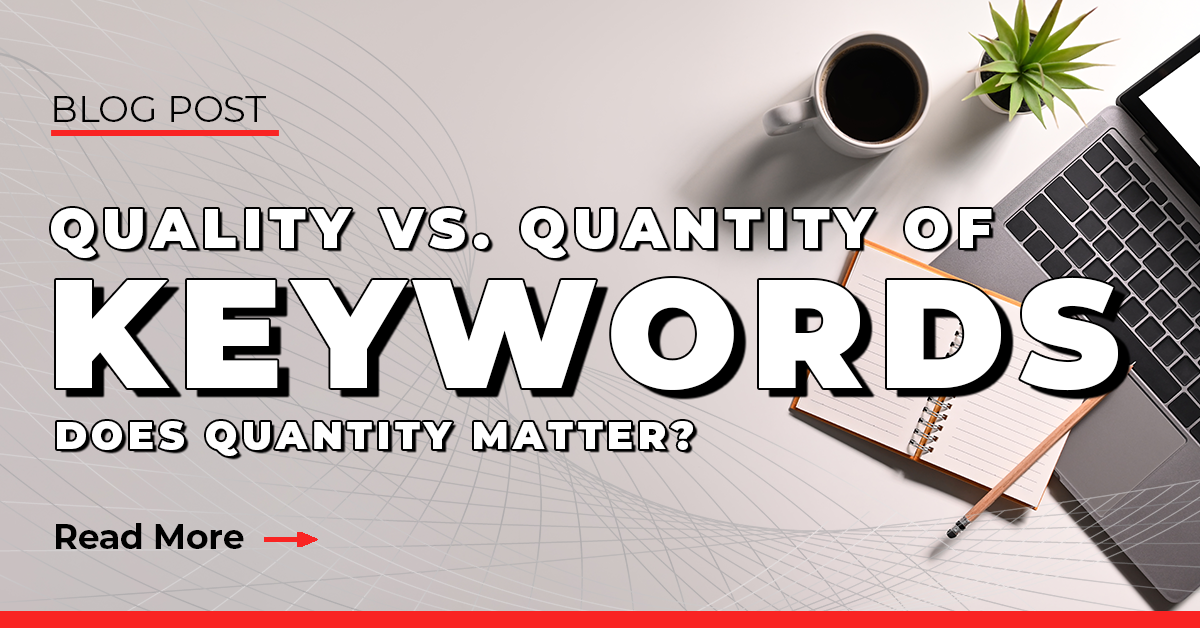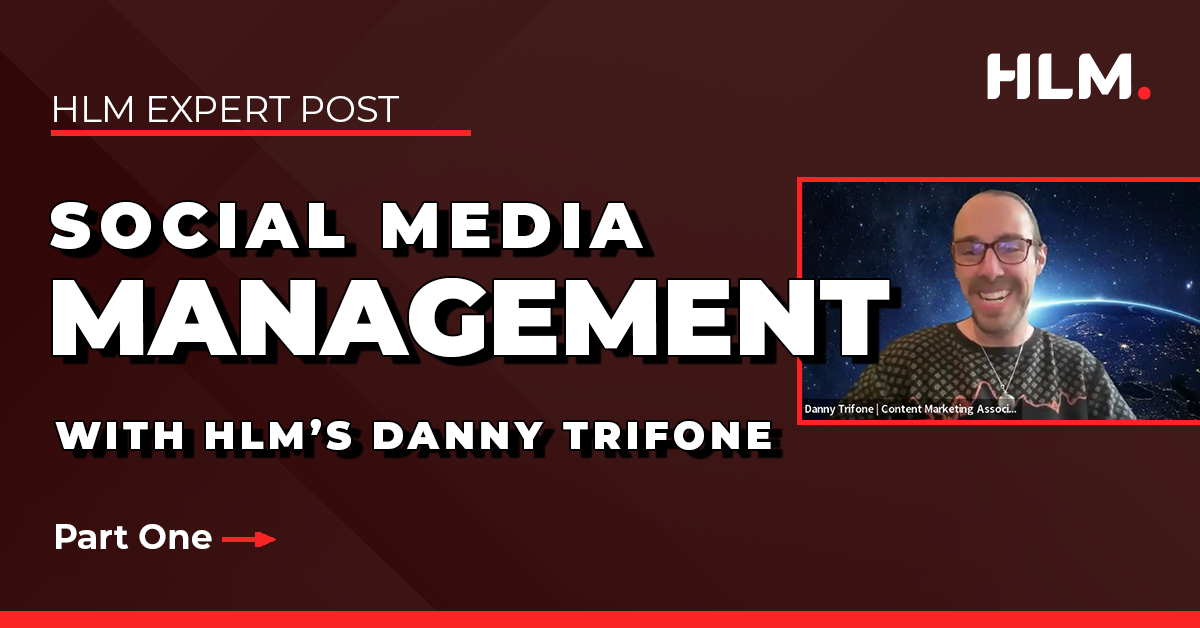7 min read
SEO Content Optimization to Boost Your Website's Rankings
![]() By Annie Wissner
Dec 6, 2022 5:22:00 PM
By Annie Wissner
Dec 6, 2022 5:22:00 PM

Search engine optimization (SEO) is the process of improving the visibility of a website in search engines such as Google, Bing, and Yahoo. The primary goal of SEO is to drive targeted traffic to your website by making it appear higher in search results for relevant keywords and phrases.
SEO content optimization is an important part of the marketing strategy of any website owner.
There are many elements taken into account when optimizing website content for search engines, including keyword usage, interlinking, formula writing, and much more. In this blog, we'll delve deeply into SEO content optimization, what it is, why it's crucial, and how it can be implemented for your business.
What is SEO Content Optimization?
SEO content optimization is the process of making your website's content (including blog posts, articles and other content) as effective as possible when it comes to ranking higher in Google and other search engines. By optimizing your content for SEO, you can ensure your site is easily found by potential customers - leading to more traffic and sales.
Here are a few tips to optimize your content for SEO:
- Unique Content: Make sure your content is well written, unique, and engaging. Never write just for SEO, but write with SEO in mind. Your readers will want to read and share your content, so make sure it's clear and entertaining.
- Keywords: In addition to using keywords in the title and meta tags, insert them in the body of your text. This helps Google identify and index your content more quickly - which increases your chances of ranking higher in search engines. Avoid stuffing keywords, it reduces the quality of your content and decreases engagement.
- Images and videos: People often minimize the use of images and video—they fear it will slow down their website load time. Concerns about load time are valid; 47% of consumers expect a web page to load in 2 seconds or less, and a whopping 40% will leave your site if it doesn’t load within 3 seconds. A number of factors, such as what you're using to embed your videos, how many other components you have on your website, and how well your site is optimized, all play a part in determining what impact video might have on your website's loading speed. It’s worth the effort to include video, it helps explain complex topics in a way that words alone cannot, as well as boosting a website’s SEO and increasing conversions.
- Simple Language: Keep your language simple and straightforward. Complex language can make it difficult to read and understand your content.
What are Header Tags?
The overall content structure of a webpage can be established using header tags, also known as heading tags. They rank in order of importance, from H1 to H6.. Header tags improve the readability and SEO of a website, and can be considered "landmarks" that Google uses to understand what the page and content on that page are about. Each web page should have a single H1 header. Search engines and visitors to your site can understand the hierarchy of topics on a page using H2 through H6 headers as appropriate.
.jpg?width=550&height=349&name=120622_SEO_opt_image_120622-02_(1).jpg)
Why Does SEO Content Optimization Matter?
Companies of all sizes are competing online for the attention of your ideal customers, and it’s up to you to stay top of mind in an increasingly diverse marketplace. You’ll miss out on potential customers if you don't optimize your website for search engines, because your competitors' websites may appear higher in search engine results than yours.
Compelling SEO Statistics, what you need to know:
- According to Google, 53% of US consumers say they research products/services using a search engine before deciding to make a purchase.
- Search engine leads have a 14.6% close rate, while outbound leads (ex. calling, direct mail, etc.) have a 1.7% close rate.
- Almost a third of US consumers search for local businesses on the internet daily.
- 28% of local business internet searches result in a purchase within 24 hours.
Benefits of Ongoing Content Marketing:
By regularly publishing high-quality content, you build brand awareness, trust and loyalty - people who consume your content will form a positive impression of your company. Relevant, well-researched content helps you build website authority and position your business and staff as trusted advisors to current and prospective customers. Here are some of the benefits of frequent content creation:
- Reach ideal customers: Consistent targeted blogs, eBooks, and other content can reach your clients where they are - on social media or scrolling on their mobile phones.
- Better search engine ranking: Search engine crawlers are more attracted to sites with new and refreshed content.
- Increase Product/Service visibility: You can increase visibility for your products and services, and create content specific to the geography you serve.
- More internal linking: Provides more internal linking opportunities to keep people on your website longer.
Why CTAs are Crucial:
CTAs are critical on any webpage. When a website visitor clicks on a call to action, they are led along the path to completing a transaction or signing up for a service. People must be able to locate the CTAs on a webpage in order to follow the instructions, so it’s essential that they stand out. A brilliant CTA can easily capture people's attention, intrigue them, and guide them along your buyer’s journey.
- Choose your CTA colors wisely: The color of your CTAs matters. Based on this study, CTA colors that are the most effective are red, green, and orange.
- Make your CTA text visible and not too big: You should make sure that your CTA is easy to read and visible, especially if you have more website visitors from mobile devices. When text is large, it’s actually harder for people to consume the message, so it’s a good idea to ensure it’s sized properly.
- Keep your CTAs short: CTA writers must keep their statements short to communicate effectively. If someone only has a half second to read your CTA, they must be able to understand the message. It's ideal to keep them to two to three words.
- Good CTAs create a sense of urgency: By using action-oriented language and emphasizing a way to address an urgent need or limited time offer, you will increase the likelihood that people will click.
7 Best Practices to Optimize SEO Content
As we've outlined above, content optimization is the act of ensuring your content has the best possible chance of achieving its desired goal, whether it's ranking in search engines, turning visitors into customers, or a combination of both. You can perform proven technical tasks to achieve some of these goals, but it's more than that. Writing and marketing techniques must also be addressed. Content that's good for human consumption will also perform well on search engines. Here are 7 tips to strengthen your content for SEO:
#1: Build Trust & Authority
It's almost impossible to run a successful business today without investing in trust and authority. On top of creating consistent, relevant, high-quality content, there are other things you can do to establish a trustworthy brand with prospects and customers. It involves not only talking about your brand, but also gaining third party evidence to support your company's credibility. Here are some things that are proven to increase trust online:
- Outline your certifications and awards
- Obtain client testimonials and revenues reviews
- Highlight your years of years of experience/in business
- Incorporate engaging images of your project portfolio
When it comes to your business credentials, you don’t want the same boilerplate copy on every page, but rather, you can come up with a quick tagline.
Example: “Our family-owned business has had the honor of serving Jasper residents since 1987.”
#2: Embrace Proven formulas for Content Success
Using the PAS and AIDA copywriting formulas will help you produce high-quality marketing copy that is both compelling and persuasive. These formulas will help you establish a few fundamental guidelines for producing effective content copy. Let's learn more about these popular copywriting techniques:
- The PAS Copywriting Formula: The PAS (Problem-Agitate-Solution) copywriting model helps your customers identify their problem, the action they must take to solve it, and then points to your product or service as the simple solution to the problem.
- Problem: Define the problem your dream customers have.
- Agitation: Once the problem is established, clearly and factually, it’s time to inject emotion.
- Solution: Unveil the solution, the answer- your product or service and the accompanying benefits.
- The AIDA Formula: In 1898, American entrepreneur Elias St. Elmo Lewis developed the AIDA model. Lewis was an advertising advocate who wrote and lectured extensively about advertising's potential. Customers follow a series of steps or phases as they make purchasing choices. With so much competition, it can be very difficult for you to reach your target audience. Using the AIDA approach can help you stay on track as you compose your message to entice buyers.
- Awareness: Customers are made aware of a product, brand, or service.
- Interest: Customer interest grows as prospects learn more about what benefits the product has to offer and how it fits with their lifestyle.
- Desire: The customer develops a connection with the product and moves from being interested to wanting or “needing” it.
- Action: Customers decide to interact with the product or service, by downloading a trial version, creating an account, subscribing to an email, or making a purchase.
#3: Focus on Internal Linking
Internal linking is a hyperlink on a website page that links to another page on that same site. While internal linking is often neglected in favor of other on-page optimization tactics, they can significantly increase your SEO performance. Internal links allow search engines to effectively index, understand and thus promote your content, improving keyword and page rankings. For a successful interlinking strategy, follow these recommendations:
- Aim for 3 - 4 internal links per web page page
- Mention additional services or other products your company offers
- Build authority by linking to reviews, case studies, etc.
- Link to a related blog post, FAQ or video on your website
- End the page with a call to action (CTA) that links to the contact page
#4: Conduct Keyword Research
The goal of keyword research is to obtain and analyze the search terms that people use on search engines to find the products and services your business offers. Using keyword research, you can determine which keywords to target and learn what keywords your customers are looking for on Google. This knowledge can help you develop your content strategy and guide your overall marketing approach.
#5: Create Mobile First Content
Mobile devices, which now account for 54% of web traffic, have been central to the digital revolution over the last decade. Because mobile visitors are prioritized over desktop visitors, mobile content is built around quick skimability. You can use bullet points to improve the flow of a page and allow readers to access the information they need without being overwhelmed by large blocks of text. Because there are space restrictions on smaller screens, and the flow of text can differ across devices, it’s important to create content that’s responsive across various screens.
#6: Leverage Transition Words and Phrases
To improve the flow and readability of your content, add transition words at the start of new paragraphs.
|
|
#7: Avoid Keyword Cannibalization
When multiple pages on the same site are optimized for the same keywords the site starts competing against itself. To prevent this, each page needs to have just one unique target keyword.

What Does Content Optimization Success Look Like?
Content optimization techniques can enhance your website rankings while also satisfying the demands of your audience and search engine crawlers, helping to power your content up the search engine results pages SERPs and achieve success in search. But how do you know if your SEO content optimization efforts are working? Here are some indications of success:
- The page is being indexed by Google and other search engines.
- Impressions are coming in or growing.
- Page ranking is improving.
- User engagement is increasing or improving.
- Conversions are rolling in or improving.
- Other sites are linking back to the page.
The Bottom Line
SEO content optimization is an important part of the marketing strategy of any website owner. However, optimizing SEO content can be a daunting task. If you're new to SEO, you can always start with the basics of content optimization, such as using the right keywords, creating unique content and writing in simple language. Over time, you'll learn more about SEO and how to improve your content to achieve a higher ranking in search engines.
If you’re ready to take the next step and optimize your SEO content for search engine optimization, you must do a thorough analysis of your website and identify the areas that could use the most improvement. Once you have identified those areas, it's time to develop a content strategy that includes best practices for SEO content optimization, along with a project plan to get it all done.
Better SEO = More Trust. More Traffic. More Leads.
Author: Annie Wissner
Contact Us NowRecent Posts
When you're done with this post, check out our other content below for more Digital Marketing expertise
Contact Us Today
Complete the form below and receive a call within minutes.
Need faster results? Call us now at (888) 717-4249





